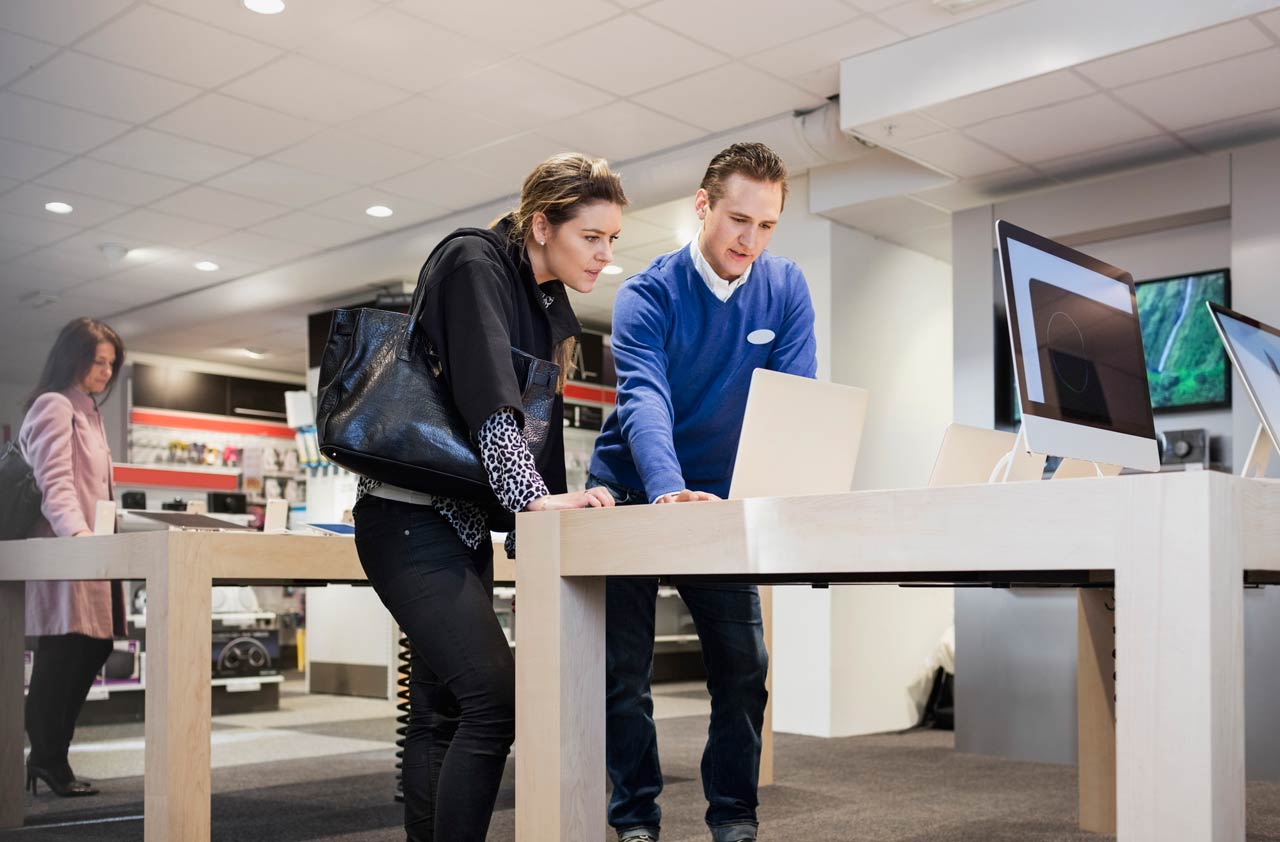Find a Laptop That Fits You
If you’re upgrading, you won’t have to spend a bundle to get what you need.


For all the convenience and computing power that smartphones and tablets offer, sometimes a full-fledged computer is still the best tool for completing tasks at home or even on the go. Today’s laptops typically have faster processing speeds, more storage capacity and longer battery life than their recent predecessors. Many have also taken cues from tablets to become more versatile, with touchscreens and designs that let you turn a clamshell laptop into a tablet.
The best laptop for you depends on how you spend your screen time. But no matter how you use a computer, you can find a solid choice for $600 or less. For a child or teen, a Chromebook—a basic laptop with fewer features that relies on the Chrome web browser—is a solid option with an attractive price tag of about $200. Adults who mostly surf the web, check e-mail and social media, and use word processing and spreadsheets can pick up a midrange machine for $300 to $500. And if you’re looking for an all-purpose workhorse, you can find models that pack enough power and speed to run multiple applications without delays, come with higher-resolution displays, and use solid-state drives starting at about $600. (For laptops likely to be discounted this summer, see 62 Super Deals and Discounts for 2019.)
One thing that hasn’t changed: Shopping for a laptop still requires wading through an alphabet soup of terms, such as RAM, SSD, GB and other specs, to compare memory and speed.
From just $107.88 $24.99 for Kiplinger Personal Finance
Become a smarter, better informed investor. Subscribe from just $107.88 $24.99, plus get up to 4 Special Issues

Sign up for Kiplinger’s Free Newsletters
Profit and prosper with the best of expert advice on investing, taxes, retirement, personal finance and more - straight to your e-mail.
Profit and prosper with the best of expert advice - straight to your e-mail.
Narrow the field. Start by considering style and size. Before you look at specific models, decide how big a machine you want and the key features you need. A laptop with a 13- to 14-inch screen offers a balance between portability and usability while still weighing in at less than 4 pounds. Shaving about 2 inches off the screen size typically lightens the load by at least half a pound.
If you’re looking for the power of a laptop but want the versatility of a tablet, consider one of the many Windows 2-in-1 models that you can use as a traditional clamshell or as a handheld tablet (or in other screen positions). Some models offer a screen that fully detaches from the keyboard; others use flexible hinges that let the screen open 360 degrees (these laptops generally boast better battery life than the ones with fully detachable screens). A convertible laptop generally costs about $50 to $100 more than a similar traditional laptop.
Check the specs. To make sure your laptop will meet your needs, take a closer look at the main components. A good baseline for shoppers who want to strike a balance between performance and price: an eighth-generation Intel Core i5 or i7 processor with 8 to 16 gigabytes of RAM and a 256GB solid-state drive (SSD).
Here’s why: The processor, which serves as the brains of your computer, has a huge influence on performance. But for users who don’t run power-hungry programs, such as demanding video games, a top-of-the-line Core i9 usually isn’t worth the premium price tag. A laptop equipped with an i5 or i7 can handle everyday tasks, such as web browsing and word processing, as well as jobs that require more muscle, such as streaming high-definition video and editing photos.
Spending more for a little extra RAM—which is short for random access memory and affects your computer’s speed and ability to multitask—makes sense if you’re a big multitasker. For most users, 8GB is enough. But for those who are guilty of leaving too many web browser tabs open at once or who like to listen to music while drafting e-mails, browsing Twitter and reading the news, springing for 16GB will keep things running more smoothly.
As for hard drives, size matters less if most of your files and applications live in the cloud. But choosing an SSD, which is light and power-efficient, instead of a traditional mechanical hard drive will make your computer faster and more reliable.
Profit and prosper with the best of Kiplinger's advice on investing, taxes, retirement, personal finance and much more. Delivered daily. Enter your email in the box and click Sign Me Up.

-
 'Donroe Doctrine' Pumps Dow 594 Points: Stock Market Today
'Donroe Doctrine' Pumps Dow 594 Points: Stock Market TodayThe S&P 500 rallied but failed to turn the "Santa Claus Rally" indicator positive for 2026.
-
 The Wealth Equation: Balancing Money and Stress
The Wealth Equation: Balancing Money and StressSponsored Don’t let assets be a liability that strains your family.
-
 Is Your Emergency Fund Running Low? Here's How to Bulk It Up
Is Your Emergency Fund Running Low? Here's How to Bulk It UpIf you're struggling right now, you're not alone. Here's how you can identify financial issues, implement a budget and prioritize rebuilding your emergency fund.
-
 9 Types of Insurance You Probably Don't Need
9 Types of Insurance You Probably Don't NeedFinancial Planning If you're paying for these types of insurance, you may be wasting your money. Here's what you need to know.
-
 When Tech is Too Much
When Tech is Too MuchOur Kiplinger Retirement Report editor, David Crook, sounds off on the everyday annoyances of technology.
-
 I Let AI Read Privacy Policies for Me. Here's What I Learned
I Let AI Read Privacy Policies for Me. Here's What I LearnedA reporter uses AI to review privacy policies, in an effort to better protect herself from fraud and scams.
-
 Amazon Resale: Where Amazon Prime Returns Become Your Online Bargains
Amazon Resale: Where Amazon Prime Returns Become Your Online BargainsFeature Amazon Resale products may have some imperfections, but that often leads to wildly discounted prices.
-
 What Is AI? Artificial Intelligence 101
What Is AI? Artificial Intelligence 101Artificial intelligence has sparked huge excitement among investors and businesses, but what exactly does the term mean?
-
 Roth IRA Contribution Limits for 2026
Roth IRA Contribution Limits for 2026Roth IRAs Roth IRAs allow you to save for retirement with after-tax dollars while you're working, and then withdraw those contributions and earnings tax-free when you retire. Here's a look at 2026 limits and income-based phaseouts.
-
 Four Tips for Renting Out Your Home on Airbnb
Four Tips for Renting Out Your Home on Airbnbreal estate Here's what you should know before listing your home on Airbnb.
-
 Five Ways to a Cheap Last-Minute Vacation
Five Ways to a Cheap Last-Minute VacationTravel It is possible to pull off a cheap last-minute vacation. Here are some tips to make it happen.